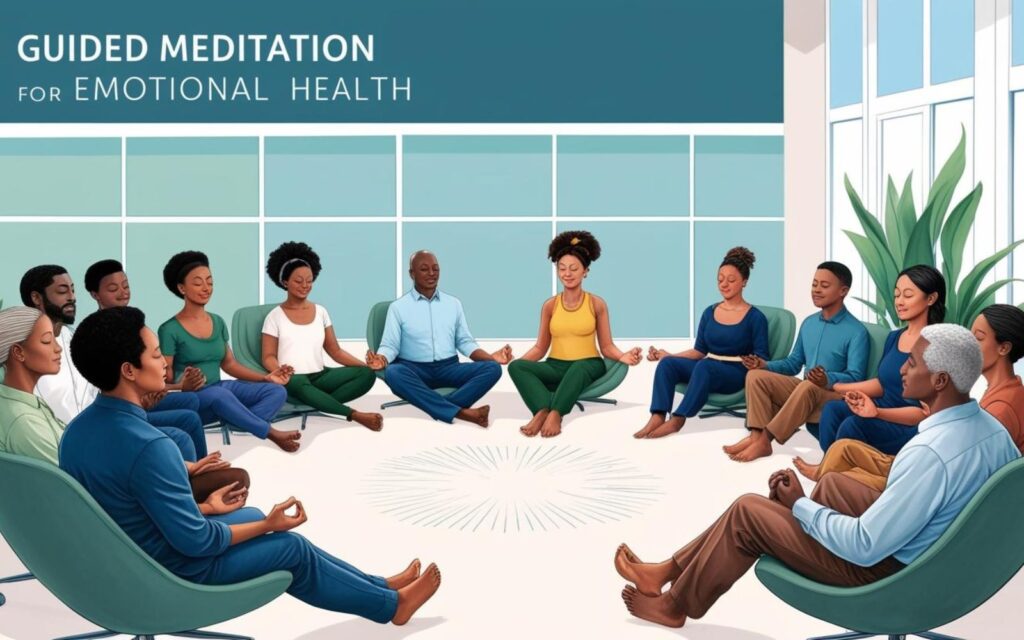Mindful Work Breaks for Better Mental Health: 9 Steps to Boosting Focus

In today’s fast-paced work environment, getting caught up in back-to-back meetings, deadlines, and tasks is easy. But without taking mindful breaks, you might notice your focus slipping, your stress levels rising, and your creativity fading.
A micro-break every 30 minutes can enhance well-being and productivity by combating fatigue and improving focus. That’s where mindful work breaks for better mental health come in.
These breaks aren’t just pauses to catch your breath- powerful tools that can reduce stress, combat mental fatigue, and restore energy levels.
Unlike traditional breaks, where you might scroll through social media, mindful breaks help you fully reset your brain and body.
This guide will show how taking a break with intention can boost physical and mental health and improve productivity.
Key Takeaways
- Mindful breaks significantly improve focus, creativity, and resilience against workplace pressures.
- Short, mindful practices like deep breathing, stretching, and mindful movement help regulate your sympathetic nervous system.
- Incorporating mindful activities like gratitude and mindful hydration can improve overall well-being and reduce the harmful effects of chronic stress.
- Micro, lunch, and physical activity breaks can support your mental and physical health throughout the day.
Why Mindful Work Breaks Matter

Your body and brain need time to recover after handling complex work-related tasks. Mindful work breaks can reduce stress levels, preventing chronic stress, which affects your emotional health, energy levels, and ability to solve problems effectively.
Benefits of Mindful Breaks
- Reduces stress levels: Mindful breathing and other mindfulness practices, such as focused breathing and gratitude, help reduce stress by slowing your heart rate and calming your nervous system.
- Boosts mental clarity: By focusing on the present moment, you can let go of distractions and feel more centered.
- Increases productivity: Taking mindful breaks prevents mental fatigue, helping you stay engaged with your work.
- Enhances creative thinking: Stepping away for a few minutes can spark new ideas and improve problem-solving skills.
- Improves physical health: Short stretches and mindful movements prevent stiffness and support your posture.
Mindful Work Breaks for Better Mental Health
Mindful work breaks for better mental health help reduce stress, boost focus, and promote well-being through purposeful moments of rest.
1. Deep Breaths to Reduce Stress

One of the quickest ways to reset is by taking deep breaths. Breathing deeply signals your brain to relax, reducing the “fight or flight” response triggered by your sympathetic nervous system.
How to Practice Mindful Breathing
- Find a comfortable position or standing.
- Inhale slowly through your nose for 4 seconds.
- Hold your breath for 4 seconds.
- Exhale through your mouth for 6-8 seconds.
- Repeat this cycle for 1-3 minutes.
This simple exercise can help you manage stress and improve your focus, even during high-pressure moments.
2. Mindful Stretching for Physical and Mental Health

Sitting for long periods affects both your physical health and mental well-being. Stretching helps ease muscle tension and re-energizes your brain.
Try These Simple Stretches:
- Neck Stretch: Tilt your head gently to one side, hold for 10 seconds, then switch sides.
- Shoulder Rolls: Slowly roll your shoulders forward, then backward, releasing any tension.
- Forward Fold: Stand up, bend forward, and let your arms hang toward the floor to stretch your back and legs.
Adding mindful stretches to your day boosts blood circulation, reduces stress, and prevents burnout.
3. Short Walks to Improve Creativity

A short walk can serve as an effective way of taking breaks, providing a powerful reset for your mind and body.
Walking stimulates your physiological processes, refreshing your thinking and improving problem-solving.
Mindful Walking Tips
- Please leave your phone behind or switch it to silent mode.
- As you walk, focus on the sensations-your feet touching the ground, breathing, and the sounds around you.
- Take a few minutes to breathe deeply and engage with the present rather than letting your thoughts wander.
A 5-minute walk can lift your mood, reduce stress, and improve your health.
4. Practicing Mindfulness During Lunch Breaks

Lunch breaks are often rushed or filled with distractions. Turning your lunch into a mindful ritual can refuel your body and mind more effectively.
Mindful Eating Practice
- Sit down with your food without any screens or work distractions.
- Pay attention to the texture, flavor, and aroma of each bite.
- Chew slowly and breathe between bites, staying present in the moment.
Mindful eating during lunch breaks helps you avoid burnout, improves digestion, and enhances overall well-being.
5. Guided Meditation for Emotional Health

Meditation helps you step away from stressful thoughts and reset your focus. It also increases job satisfaction and helps create a more productive work environment.
How to Get Started
- Use a meditation app like Calm or Headspace for guided sessions.
- Choose a 3-10 minute session focused on relaxation or positive psychology.
- Seek a peaceful place to shut your eyes and enjoy a mental pause.
6. Digital Detox Break to Manage Stress

Notifications, emails, and meetings constantly overstimulate our brains. A digital detox break helps clear mental clutter and restores your attention span.
Digital Detox Tips
- Silence your phone or put it in another room.
- Turn off notifications for a few minutes to focus solely on your thoughts.
- Engage in tech-free activities like stretching, drinking water, or taking a short, mindful walk.
Giving your brain a break from screens helps reset your focus and prevent burnout.
7. Mindful Gratitude Check-Ins

Practicing gratitude can transform your outlook and improve your emotional health. Taking a moment to reflect on what you’re grateful for fosters a positive mindset.
How to Practice Gratitude
- Close your eyes and think of 3 things you’re grateful for-big or small.
- Reflect on why these things matter to you.
- Breathe deeply and smile as you appreciate them.
By making gratitude check-ins a habit, you’ll feel more motivated and experience higher job satisfaction.
8. Incorporating Mindful Movement

If you don’t have time for a full workout, mindful movement can still help. Gentle physical exercises like yoga or tai chi combine physical activity with mindfulness, engaging both your body and mind.
Quick Mindful Movements
- Cat-Cow Stretch: A simple yoga move that releases tension in your back and improves flexibility.
- Standing Side Stretch: Stand tall, lift one arm, and bend gently to the side for a deep stretch.
These exercises take just a few minutes but can restore your energy levels and support your mental and physical health.
9. Changing Your Environment

Tips for Creating a Mindful Space
Changing your environment can be a powerful way to take a mindful break and enhance your mental and physical health. Here are some tips for creating a mindful space:
- Get outside: Nature can remarkably calm the mind and reduce stress. Take a short walk outside or find a quiet spot in a park or garden to reconnect with the natural world.
- Use natural light: Exposure to natural light can help regulate your circadian rhythms and boost your mood. Take breaks near a window or step outside to soak up some sunlight.
- Create a peaceful atmosphere: Surround yourself with calming colors, soft music, and comfortable seating to foster a serene environment.
- Minimize distractions: Turn off your phone and other electronic devices to create a quiet, distraction-free space where you can truly unwind.
- Use plants: Incorporating plants into your workspace can purify the air and create a soothing atmosphere, enhancing overall well-being.
By creating a mindful space, you can take a break from work demands and improve your mental and physical health.
Overcoming Common Challenges

Finding Time and Staying Motivated
One of the biggest challenges to taking mindful breaks is finding the time and staying motivated. Here are some tips for overcoming these challenges:
- Schedule breaks: Integrate breaks into your daily schedule to ensure you take time to rest and recharge. Set reminders if necessary.
- Start small: Begin with short breaks and gradually increase the duration as you become more comfortable with the practice.
- Find a buddy: Partner with a colleague or friend who can join you in taking mindful breaks, providing mutual support and motivation.
- Track your progress: Keep a journal or use an app to track your progress and reflect on how mindful breaks have improved your mental and physical health.
- Make it a habit: Incorporate mindful breaks into your daily routine, just like brushing your teeth or taking a shower, to make them a regular and sustainable practice.
By overcoming common challenges, you can make mindful breaks a sustainable and enjoyable part of your daily routine.
Mindful Breaks for Remote Workers

Staying Connected and Engaged
Remote workers often face unique challenges when it comes to taking mindful breaks. Here are some tips for staying connected and engaged:
- Use technology to your advantage: Leverage video conferencing tools or messaging apps to stay connected with colleagues and friends, fostering a sense of community.
- Create a routine: Establish a routine that includes regular breaks and physical activity to stay engaged and motivated throughout the day.
- Find a community: Join a community of remote workers who can provide support, share experiences, and offer motivation.
- Prioritize self-care: Prioritize self-care by setting aside time for activities that bring you joy and relaxation, such as reading, hobbies, or meditation.
- Stay organized: Use tools like to-do lists and calendars to stay organized and focused, ensuring you make the most of your workday while taking mindful breaks.
Remote workers can take mindful breaks by staying connected and engaged and improve their mental and physical health, even when working from home.
Summary
Incorporating mindful work breaks into your daily routine can significantly improve your focus, creativity, and overall productivity.
Whether taking deep breaths, doing a short walk, or practicing gratitude, mindful pauses help you stay present and resilient amid workplace pressures.
Balancing mental clarity with physical well-being creates a healthier, more productive work environment supporting long-term success.
Frequently Asked Questions
How Long Should Mindful Breaks Last?
Mindful breaks can range from 2-15 minutes, depending on your schedule. Even micro-breaks of 1-2 minutes can improve mental clarity.
What’s the Difference Between Mindful and Traditional Breaks?
Unlike traditional breaks that may include passive distractions like scrolling your phone, mindful breaks focus on calming your mind and engaging your body to refresh your brain.
Can Mindful Breaks Help with Chronic Stress?
Yes! Mindful practices like meditation and deep breathing can lower cortisol levels, helping you manage stress and improve your emotional health.
How Can I Fit Mindful Breaks into a High Workload?
Start small! Add micro breaks of 1-2 minutes throughout the day. Schedule longer breaks during lunch or after finishing big tasks to reset.
Are Mindful Breaks Really Linked to Increased Productivity?
Absolutely! Applied psychology studies show mindful breaks improve focus, creativity, and problem-solving abilities, leading to higher job satisfaction and better performance.






2 Comments